Don't wanna be here? Send us removal request.
Photo







Reflective Assignment pp. 54-61
1 note
·
View note
Photo










Reflective Assignment pp. 44-53
1 note
·
View note
Photo










Reflective Assignment pp. 33-43
1 note
·
View note
Photo










Reflective Assignment pp. 15-31
I also drew in pencil to still invite the idea that Marcus can be modified. Marcus can be anyone. Marcus can be any color or sex. With just a rub of an eraser, Marcus can be you.
1 note
·
View note
Photo

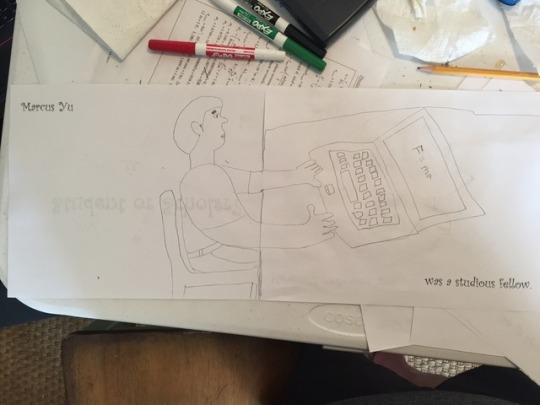
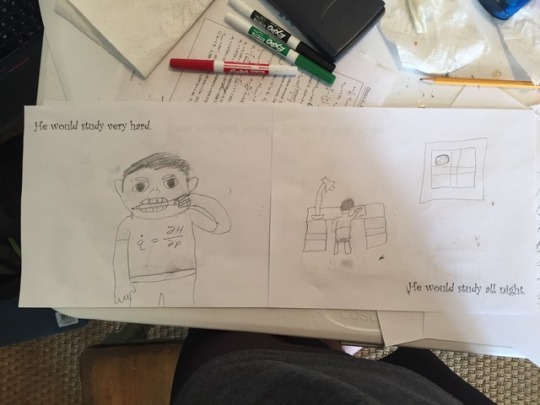
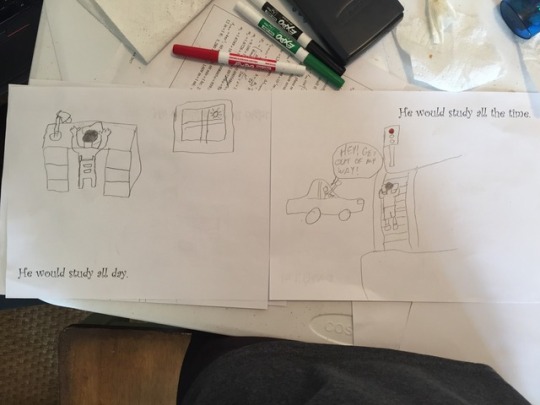
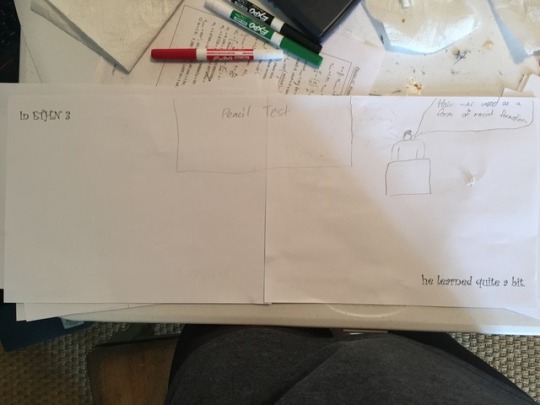
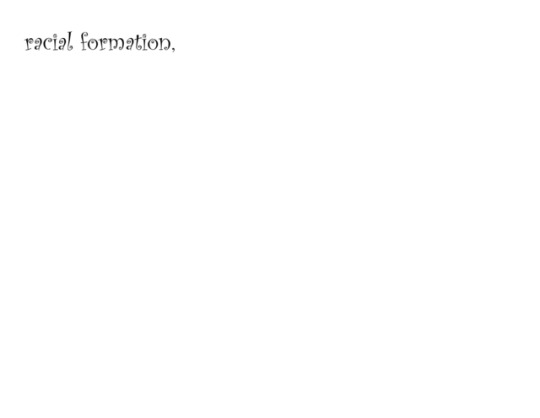
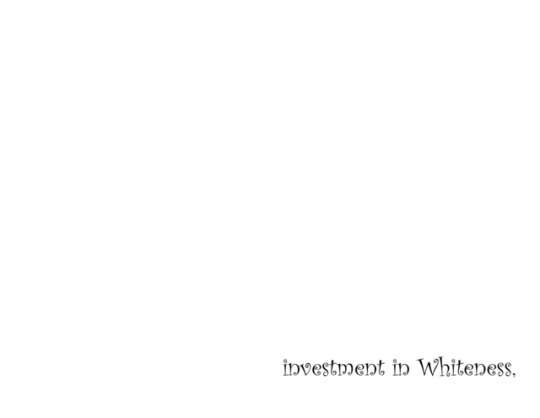
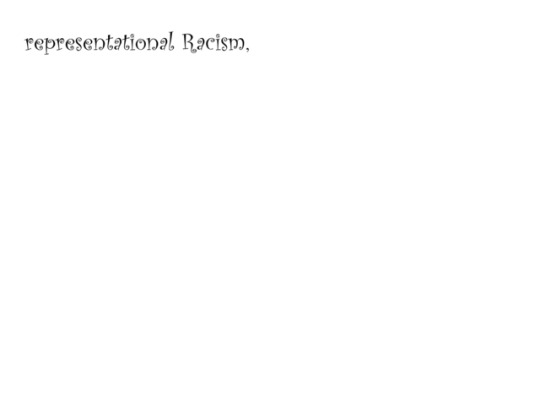
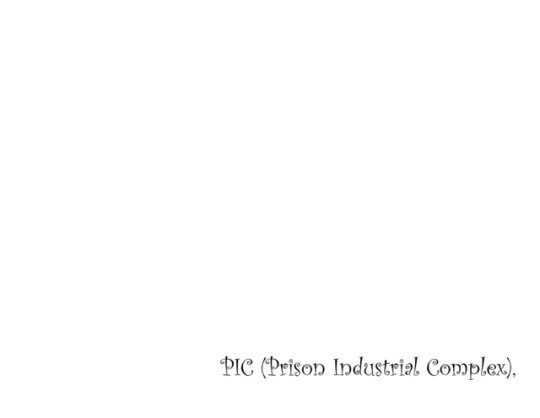
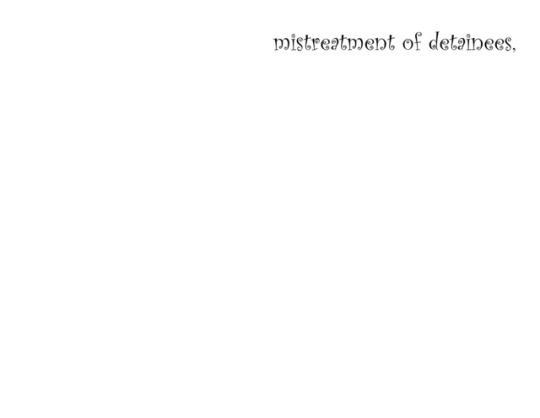
Reflective Assignment pp. 1-14
I wanted to make my children’s book more interactive and universal, so I am leaving some pages without a drawing in order for the reader to draw his/her interpretation of mistreatment of detainees, Prison Industrial Complex, representational racism, and so forth. I also left the drawings uncolored because I thought children would have fun coloring it themsevles.
1 note
·
View note
Link
0 notes
Text
Notebook 4 - Feedback
a. This zine is about Trinh Mai’s Family Tree art piece based on her family’s history and prayer book and the story of her family. It focuses on relating Trinh Mai’s family history to problems countries and people face, such as western imperialism, settler colonialism, and exploitation. It covers the perception and treatment of refugees who fled Vietnam during/after the Vietnam war, and it relates those refugees to the ban on refugees from seven predominantly Muslim countries. This zine also illustrates several powerful art pieces by Trinh Mai.
b. “This idea that a descendant of refugees would participate in a war that creates more refugees begs the question colonialism is cyclic.” (Notebook 3) I picture this line referencing to a diagram about colonialism. War -> refugees -> war. The background can be a world map or a map of the places the US has spread its influence and displaced people.
“Mai has noticed that there is a greater sense of community in Vietnam that does not exist in the States.” (Notebook 1)
I particularly like this line because it contrasts the communities in Vietnam versus United States. You could relate this to neoliberalism, which I think is part of the reason the US doesn’t have the same sense of community as Vietnam; neoliberalism encourages the human self-serving nature and is strongly against the idea of government intervention to aid those in need. You could put this line next to one of Mai’s pictures of community, such as
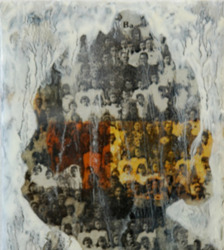
c. “Many people were promised passage to the US because they helped the US during the Vietnam War, only to figure out that they have been abandoned. Many of the people banned by Executive Order 13769 have helped the US in a similar fashion and are now barred from entering the country for which they risked their lives.” (Notebook 2) I like that you related the Vietnam war to Executive Order 13769. While the Vietnam war is definitely important and still affects people today, the Executive Order is a very recent development that has implications for people living in those seven countries and people who obtained a visa or green card but were unable to come to America. However, you might want to add a note explaining the executive order’s contents or just saying “commonly known as the Muslim Ban.” You could include a timeline of some kind of how the US has continuously abandoned people who have fought for the US throughout history, such as the translators that helped US soldiers in Afghanistan. “Trinh Mai lives by, “first human, second artist, third painter” (from the talk on 1/25/17). Given America’s stance on immigration, it makes for a good question if America lives by American first, human second. At the same time, it is only natural for humans to selfishly want to be part of an exclusive country. There has never been a time of 0% unemployment, so if people constantly worry about the incoming cheap labor that immigrants can bring, when can any immigrants ever come?” (Notebook 2) Note: I edited it very slightly for punctuation and clarity.
It’s a good point that many people are concerned about themselves before they care about other people because self-preservation is a very strong thing. I think that you could have this line next to a section about colonialism and how the refugees left Vietnam and occupied land the US stole from the indigenous people.
d. I like the image of the boat, and I think it really suits your topic because many refugees fled Vietnam by boat. If I remember correctly, there was something special about the cloth she used to make that flag, and you could look into that. While there were several other pictures on your tumblr that were powerful in their own way, I couldn’t tell just by looking at them what they were about, and they didn’t look directed related to refugees. I think this can go on a page that you talk about fleeing Vietnam or migration of any kind. I’m not sure if this violates any copyright problems. If you got these off Trinh Mai’s website, have you looked at the copyright? If there is a copyright infringement, you can also try contacting her directly for permission to post work.
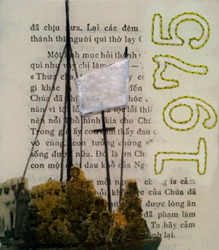
e. i (reworded analysis).
For the Mai Family and for many other refugees produced by the Vietnam War, the United States appears to be a savior. Conversely, for many Americans, the Vietnamese refugees appear to be a social burden. These refugees are victims of exploitation colonialism. Sold on the American Dream, these refugees flee their homelands and escape the devastation of exploitation colonialism to participate in settler colonialism.
The relation between exploitation colonialism and settler colonialism is part of the disappearance of Indigenous Americans. By 1975, Indigenous people of America were thought to be gone. In a more horrifying light, the indigenous fate was perceived to be justified by popular American culture depicting them as barbarians (even though that was far from the truth). For most of the Vietnamese refugees, the story of the people who lived off the land they were about to occupy hardly mattered. The survivance of the Indigenous people came second to their own survivance.
Both the displacement of indigenous people from now US lands and the displacement of the Vietnamese are products of Western imperialism, but the narrative of these two groups of people are very different. Colonialism destroyed both groups’ homelands, so the Mai Family flees their homeland to occupy another people’s stolen homeland. Colonialism is the driving force behind displacement of indigenous people. It is terrible that the master narrative has completely rewritten history as a justification of the theft of so many nations’ land, and has painted the current occupiers as righteous for letting people live with them on that stolen land.
American imperialism has not ended. America continues to devastate other homelands for America’s self-benefit and, at the same time, paint itself as a savior for letting the affected refugees occupy stolen land with current Americans. Modern imperialism currently affects Trinh Mai. Her nephew served in the military for 20 years and went to the Middle East for 2 tours. After standing trial when he was a teenager, he was given a choice of prison or the military. After serving his mandatory 2 years, the nephew chose to stay in the military. His grandfather fought the Communist regime with Americans in the Vietnam War and even was sent to a concentration camp for opposing the government. After being exposed to the military, Trinh Mai’s nephew felt inspired to continue to serve the military that served alongside his grandfather. When descendants of refugees participate in a war that creates more refugees, they create a continuous cycle of displacement.
In particular, this prayer book represents Western imperialism through the letters in the book. Vietnam was a victim of both Chinese and French colonialism. Vietnam was under Chinese control until the French made Vietnam a French colony. To distance Vietnam from China and to make the Vietnamese language easier for French people, the French forced the Vietnamese people to use a Latin-based alphabet.
Christianity was also a product of Western imperialism. During the 18th and the 19th century, people of the Christian faith tried to convert the people of the colonized lands to Christianity. They justified their occupation of these lands, settler colonialism, by claiming they were helping “savages” become “civilized.” They claimed they were helping these lands. This was called the white man’s burden. In reality, they were exploiting workers for their own profit.
When the prayer book was passed to Trinh Mai, she transformed it using techniques she learned at San Francisco State University, an American university that exists due to settler colonialism.
ii (good parts). I reworded some of your analysis about the effects of American imperialism and the analysis of how Westerners relates to the Vietnamese. I appreciate how you tried to relate refugees fleeing Vietnam to the occupation of stolen land in the United States. When these refugees were displaced from their lands, they ended up occupying land that the government had displaced other people from. It’s powerful in that you get straight to the point. It’s clear and very easy to read. iii. However, some things aren’t really clear to me, and maybe it’s because I don’t really know that much about the Vietnam war. Who were the Vietnamese refugees fleeing from? On one hand, it sounds like you’re saying they’re trying to escape the effects of western imperialism, but on the other hand, it sounds like they were fleeing the new Vietnam regime.
I think it’s important for you to note that the French and Japan were the occupiers of Vietnam, though likely other countries aided in the oppression of the Vietnamese. Colonialism isn’t just something the US does and that doesn’t really come through. I’m also not too clear on who your target audience is. Is it someone who has seen the prayer book and is interested in the backstory?
#TrinhMai#FamilyTree#westernimperialism#settlercolonialism#exploitation#refugees#Vietnam#Muslim#worldmap#US#communities#neoliberalism#humanself-servingnature#governmentintervention#ExecutiveOrder13769#visa#greencard#MuslimBan#translators#indigenouspeople#copyrightinfringement#savior#socialburden#exploitationcolonialism#AmericanDream#homelands#disappearanceofIndigenousAmericans#1975#Indigenousfate#popularAmericanculture
0 notes
Text
Notebook 3
Marcus Yu
12:00-12:50
America Martinez
Notebook 3
For this ‘Zine although the Vietnam War is deeply involved with this object, the focus will remain on the object and the frameworks particularly involving this object rather than the frameworks that involve all of the Vietnam War.
For the Mai Family and for many other refugees produced by the Vietnam War, the United States appears to be a savior for them, and for many Americans, the Vietnamese refugees appear to be a social burden when in reality these refugees are victims of exploitation colonialism. Sold upon the American Dream, these refugees flee their homelands and escape the devastation of exploitation colonialism to participate in settler colonialism.
The relation between exploitation colonialism and settler colonialism is part of the disappearance of Indigenous Americans. By 1975 Indigenous Americans were viewed as mostly dead. In a more horrifying light, the indigenous fate was perceived to be justified by popular American culture since they were barbarians (even though that was far from the truth). For most of the Vietnamese refugees, the story of the people who lived off the land they were about to occupy hardly mattered. The survivance of the Indigenous people came second to their survivance.
Both products of Western imperialism, but the narrative of these two groups of people are very different. Colonialism destroyed both groups’ homelands, so the Mai Family flees their homeland to occupy another people’s stolen homeland. It is cruel how the Master Narrative justifies the theft of so many nations’ land, and paints the current occupiers as righteous for letting people live with them on that stolen land.
Tragically, this relationship persists to this day. American imperialism has not ended. America continues to bring devastation to other people’s homeland for America’s self-benefit and continues to paint itself as a savior for letting the affected refugees occupy stolen land with current Americans. Modern imperialism currently affects Trinh Mai. Her nephew served in the military for 20 years and went to the Middle East for 2 tours. After standing trial when he was a teenager, he was given a choice of prison or the military. After serving his mandatory 2 years, the nephew chose to stay in the military. His grandfather fought the Communist regime with Americans in the Vietnam War and even was sent to a concentration camp for opposing the government, and after being exposed to the military Trinh Mai’s nephew felt inspired to continue to serve the military that served alongside his grandfather. This idea that a descendant of refugees would participate in a war that creates more refugees begs the question colonialism is cyclic.
In particular, this prayer book represents Western imperialism through the letters in the book. Vietnam was a victim of Chinese colonialism until the French came to make Vietnam a French colony. To distance Vietnam from China and to make the Vietnamese language easier for French people, the Vietnamese alphabet is Latin-based. Catholicism was also a product of Western imperialism. Another justification of colonialism, both settler and exploitation, during the 18th and 19th century, was the “need” for Christians to convert the colonized. When the prayer book was passed to Trinh Mai she transformed it using techniques she learned at San Francisco State University, an American university brought into existence due to settler colonialism.
#'Zine#VietnamWar#UnitedStates#Vietnameserefugees#socialburden#exploitationcolonialism#AmericanDream#settlercolonialism#IndigenousAmericans#1975#survivance#Westernimperialism#Americanimperialism#self-benefit#refugees#modernimperialism#MiddleEast#concentrationcamp#prayerbook#Chinesecolonialism#Frenchcolony#China#Vietnam#Christians#convert#SanFranciscoStateUniversity
0 notes
Photo



The amount of ‘Zine that has been completed.
0 notes
Photo










“Another facet of nationality to be considered is the identity of Vietnamese Americans who were born in the states. Trinh Mai remarked how she internalizes her family history. Upon learning her history, she considers it her own, so sometimes when people ask her when she moved to the US due to her proficient Vietnamese she will say 1975, and then correct herself by saying that 1975 is when her parents moved to the US (this information was gathered from her talk at UCSD on 1/25/17).” -Notebook 2
DISCLAIMER - All artwork is property of Trinh Mai. No copyright infringement is intended.
0 notes
Photo










1975
Ba Ngoai
Ba Ngoai with Jesus
Ba Tam
DISCLAIMER - All artwork is the property of Trinh Mai. No copyright infringement is intended.
0 notes
Text
Notebook 2
Because The Family Tree includes around 68 pages, some of the lesser detailed pages as well as that which is not publicly available may be left out. Also, I plan to further localize the object by doing more research.
I will also start posting pictures from her website: http://trinhmai.com/family-tree/, while expressing that those are her images, and making sure people understand that those are availible to view on her website.
The national bind that will be discussed is citizenship. Another facet of nationality to be considered is the identity of Vietnamese Americans who were born in the states. Trinh Mai remarked how she internalizes her family history. Upon learning her history, she considers it her own, so sometimes when people ask her when she moved to the US due to her proficient Vietnamese she will say 1975, and then correct herself by saying that 1975 is when her parents moved to the US (this information was gathered from her talk at UCSD on 1/25/17). With citizenship being such an inflammatory issue, it holds tremendous value to look at life through a family of immigrants. It would also be fitting to think of America’s perception of Vietnamese immigrants. There often is a party against immigrants, particularly through an ethnic ostracization. This may digress too far from the artwork, but I can’t help but note how similar Executive Order 13769 is to many Vietnamese refugees. The US hastily left Vietnam on April 30, 1975. Many people were promised passage to the US because they helped the US during the Vietnam War, only to figure out that they have been abandoned. Many of the people banned by Executive Order 13769 have helped the US in a similar fashion and are now barred from entering the country for which they risked their lives.
Trinh Mai lives by, “first human, second artist, third painter” (from the talk on 1/25/17). Given America’s storied stance on immigration, it makes for a good question if America lives by American first, human second. At the same time, is it only natural for humans to selfishly want to be part of an exclusive country. There has never been a time of 0% unemployment, so if people constantly worry about the incoming cheap labor that immigrants can bring then when can any immigrants ever come?
This series would not be here, today, if it weren’t for Mai’s strong Catholic ties. Many family photos and belongings were destroyed to escape persecution from the “Communist” Party. The Mai family were fortunate to be able to keep such photos due to some of their kids studying abroad in Catholic schools. Also, it is interesting how the this has shaped the view of Communism today. Many immigrants who have fled a military takeover by a “communist” party despise anything remotely similar to communism like any type of welfare programs as that can remind them of how they had to flee their home country. However, considering the Vietnamese “Communist” Party as real communists would be like considering America to be a truly capitalistic society. There may be elements of communism during the takeover, but it was a true bastardization.
(other sources indicated in Notebook 1 will be used)
#TheFamilyTree#TrinhMai#citizenship#nationality#VietnameseAmericanidentity#US#Vietnameseimmigrants#ethnicostracization#ExecutiveOrder13769#firsthumansecondartistthirdpainter#Catholic#Communism#capitalistic
0 notes
Text
Trinh Mai Event on 1/25/17
In this presentation, Trinh Mai discussed how her art connected her to her family history. Sometimes she was told a story and she would create a piece to commemorate that story. The art pieces did not always stop there, however. That art piece could at times take on a meaning deeper she could never imagine. Her family were Vietnamese refugees who did not open up so easily about the past. They often did not want to remember the family members lost due to the Vietnam War, and they often did not want to remember how their livelihoods were lost because of the Vietnam War.
Refugees do not become a topic in this course until week 9, but due to recent events refugees have been moderately brushed over. It was very inspiring to hear the daughter of refugees create touching artwork of people who died because of the war or in an attempt to escape that war. Some might think after this presentation about how proud they are to be a fellow American. They take her family as proof of the American Dream. They can see Trinh Mai’s family as proof that you can flee a country to live a peaceful life in America. On the other hand, others would think of those who did not make it out. Some Americans may think about those who were promised a trip to the US, but was never given one. Some may even visualize some Vietnamese people hanging onto the landing gear of an American military helicopter, eventually tiring and falling to their deaths in the Pacific Ocean. Just 30 years before the Vietnam War, Jews were turned away on the docks of the East Coast. Just recently, some Americans were livid that children were coming through the southern border in an attempt to escape war. Now, there is a 90 day ban for 7 countries, mainly because many refugees are coming from those countries. In the beginning of this class, Dr. Yang asked the class what our nationality is. As Dr. Yang said a nation does not need sovereignty or land. It really makes me wonder, however, what it is like to be part of a nation that no longer exists or to no nation at all.
It may be necessary to reflect that the executive order banning people from those 7 countries was signed after this event took place, and Mai never mentioned modern refugees. The main purpose of this event was to reflect on her work, which often centered around the Vietnam War. If she intended a call-to-action in this presentation, it would have been more likely to listen to the humanity inside of you, and do as your humanity calls you to do.
0 notes
Text
Notebook 1
During her time on earth Trinh Mai’s great aunt would fervently pray with the prayer book. She came from a deeply religious family in which family members may have scores of godchildren, and family members would often study abroad to go to schools associated with the Catholic faith. Despite persecution from the Communist Party, her faith remained steadfast, and she even chose this prayer book as one of the items to bring with her on the boat that would take her to America.
When Trinh Mai saw this prayer book after her great aunt’s death, she was inspired to transform this prayer book and give it a second life. Having never lived in Vietnam, she thought it necessary to make this prayer book her family Bible. She began encapsulating family members on different profiles or depicting different backgrounds behind the family photos she brought forth memories from her family members rarely if at all told before with a series entitled Family Tree. Even though Vietnamese culture may not be as expressive as other cultures, speaking of war and a lost home may be a difficult topic for anyone of any culture, which makes this transformed prayer book that much more powerful. Mai has noticed that there is a greater sense of community in Vietnam that does not exist in the States. This series and other artwork from her career has brought the Vietnamese-American community closer. In addition, family history to Trinh Mai is very personal. As soon as a story is shared with her she feels as if she has lived that story as well. Given how personal this prayer book was for her great aunt, it really fits the personal touches she makes to the prayer books. Given America’s nature of being a country of immigrants this quote from Trinh Mai beautifully expresses why her family’s story expressed in Family Tree holds great meaning to all Americans, “Learning about the hardships and triumphs of our ancestors will put things in perspective, and will give us a greater understanding of why, how, and who we are.
Given this series passionate story of a family forced by war to immigrate from Saigon, Vietnam to America, this series fits well with War and the Figure of the Refugee. In this series, Mai reflects on her family’s lives blending past pictures of elders with current profiles of their children or grandchildren. She also deeply reflects on her family’s Catholic faith as well as a reflection of the Vietnam War’s effect on her family. Family members she never physically met would become so personal as she drew sometimes even family members lost in the war.
Much of the story was obtained through her lecture on Jan. 25 entitled “A Conversation with Vietnamese-American artist Trinh Mai”
This source is a link to her website with a different description
http://trinhmai.com/family-tree/
This source includes more of the photos in the series:
https://www.facebook.com/media/set/?set=a.10150262384491446.335322.287644426445&type=3
This source is an interview with Trinh Mai:
http://www.wintertangerine.com/interview-with-trinh-mai-thach/
This source is another interview with Trinh Mai:
http://www.vietfilmfest.com/festival-news/interview-with-artist-trinh-mai/
0 notes












